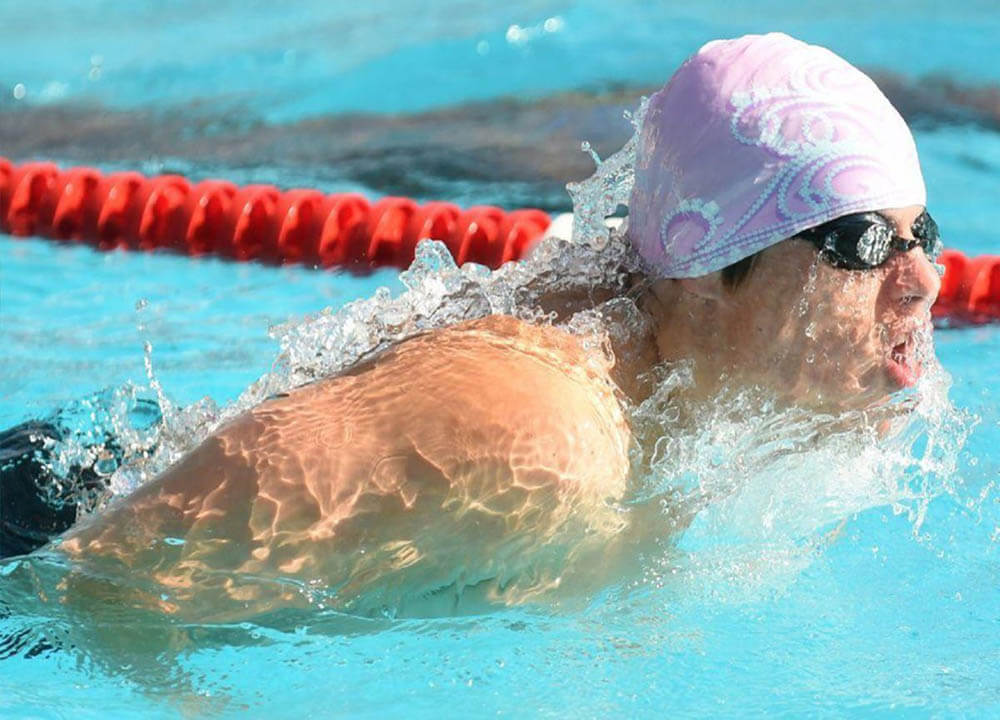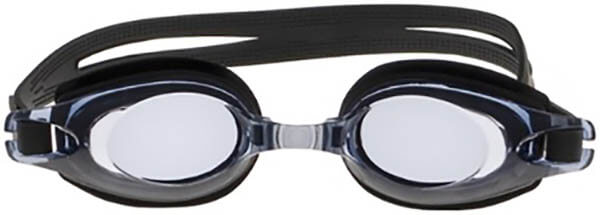How To Prevent Swim Goggles From Fogging

Goggles play a crucial role in someone’s swimming experience. Whether someone is swimming competitively, training for a competition or just for fun and exercise, a proper pair of swim goggles can dramatically improve someone’s vision, improving their experience and even providing some swimmers with a competitive advantage. While some people may not realize it, swimming is hard work and people get warm and sweat while they are swimming. When the warm air around your face meets the air cooled by the water outside of the goggles, fog develops on the lens surfaces as the water evaporated from your skin in the warm air is cooled and turned into water vapour, making it hard to see. Fortunately, there are some easy tips and tricks that people can employ to reduce the severity of the fog that clouds the lenses of the goggles. One of the best tips is to consult with a doctor before using any googles. Then, start using prescription swimming goggles during your practice. It is highly essential for your swimming performance.
Investing in Anti-Fog wipes or Anti-Fog Goggle Lenses
The best and easiest way to prevent the swim goggles from fogging up is to purchase reusable anti-fog wipes for swim goggles without factory anti-fog coating or to get a pair of off-the-shelf anti-fog swim goggles. Anti-fog wipes do not leave permanent anti-fog coating on the lenses such that they do not alter the lenses in any way. This way, they can be applied to the lenses over and over again without any damage to the lenses. Factory coated anti-fog swim goggle lenses on the other hand, leave an active coating on the inside surfaces of the lenses.
While these are often the more economical alternative, care must be taken such that the inside of the lenses are not touched as otherwise the coating would be permanently damaged, rendering the lenses unuseable. It can be helpful to rinse the pair of goggles with some fresh, cold water prior to putting them on. This will improve the performance of the anti-fog coating. It is important for everyone to remember that this anti-fog coating will wear off over time. Once the anti-fog coating wears off, the vision through the lenses will become blurry. New lenses (or a new pair of swim goggles) will need to be purchased when this happens. The coating itself cannot be replaced.

Standard Goggles Photo Courtesy: Goggles n More
Remain Cool in the Water
Swimming goggles start to fog up when people sweat because the perspiration spreads to the lenses, building up on them. One of the ways to prevent this from happening is to remain cool in the water. This means drinking cold water or sports drinks to keep the core body temperature down. When taking breaks between laps or swims, it can be helpful to splash cold water on the face or to exit the water, allowing the body to cool down. When the body stops sweating, the fog on the lenses should improve as well. Sometimes, simply venting the goggles will be enough to clear them up.
Tried and True Swim Goggle Anti Fog Tricks
Swimmers who wear swim goggles regularly know of the tried and true anti fog in pinch tricks. One that sounds a bit gross but is actually effective is to spit on the swim goggle lenses. This method gives what is known in the science community a surfactant. This stops water particles from forming together. A tiny bit goes a long way and you just gently spread it with your fingertips. If you are in salt water, this may be your only option if you don’t have access to fresh water nearby. Most people who do this still do a quick rinse since saliva isn’t known to be the cleanest. Baby shampoo, conditioner or shaving cream is yet another option. Similar to the toothpaste, a tiny dab spread evenly and then rinsed after about 15 minutes. Often time, swimmers will hop in the shower post swim with their goggles and add a bit of shampoo or conditioner quickly during their post swim rinse off. For good measure, give 1 more rinse so you are sure to not get shampoo in your eyes. Even if it says tear free, this is not the best time to test that!
Preventing Fog on the Lenses of the Goggles
While anti-fog wipes is probably the best option, both in terms of anti-fog performance and they are safe on goggle lenses, if you are using goggles with factory coated anti-fog lenses, one thing to reiterate is to never touch your swim goggle lenses with your bare hands (this will damage the coating permanently). As hard as this is, it is imperative to get the most wear out of your factory anti fog coating. One great suggestion is to have a couple pairs of swim goggles and rotate them out. Storage is also a necessary step in keeping your swim goggles in good shape. The best option is a hard case, if you don’t have one then the bag the swim goggles came in will work. If you don’t have either available, storing inside a pair of socks will help protect your swim goggles when they are thrown inside your swim bag.
Try out some of the tips and tricks discussed above. Nobody should have to deal with fog clouding their vision underwater. There are plenty of swim goggles and anti-fog options available that can make this problem a worry of the past.

The above press release was posted by Swimming World in conjunction with Goggles N More. For press releases and advertising inquiries please contact Advertising@SwimmingWorld.com.





Just clean the inside surface of the goggles with a dab of liquid soap about once a week. This works for me.
“Swimming goggles start to fog up when people sweat because the perspiration spreads to the lenses, building up on them. ” This is not true. There is plenty of water present without the sweat being a factor. The goggles fog up because the air inside the goggles is warm and saturated with moisture, but the goggle lens is cooled down to water temperature. This causes condensation just like on a glass of cold water on a summer day,.